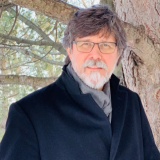Howe Machine Co. v. National Needle Co., 134 U.S. 388 (1890)
U.S. Supreme Court
Howe Machine Co. v. National Needle Co., 134 U.S. 388 (1890)Howe Machine Company v. National Needle Company
Nos. 201, 202
Argued March 7, 10, 1890
Decided March 24, 1890
134 U.S. 388
Syllabus
There was no novelty or invention in
"the combination of a gripping chuck, by which an article can be so held by one end as to present the other free to be operated upon, with a rest preceding the cutting tool, when it is combined with a guide cam or its equivalent, which modifies the movement of the cutting tool, all operating together for the purpose set forth,"
which was patented to Charles Spring and Andrew Spring by letters patent dated May 10, 1859, and extended for seven years from May 10, 1873, and the letters patent therefor are therefore invalid.
Pennsylvania Railroad v. Locomotive Truck Co., 110 U. S. 490, again affirmed.
These are appeals from decrees of the Circuit Court of the United States for the District of Massachusetts dismissing bills in equity brought on account of alleged infringement of letters patent granted May 10, 1859, to Charles and Andrew Spring for an "improvement in lathes for turning irregular forms." The patent was extended for seven years from May 10, 1873. The bills were filed May 27, 1879. The opinion of the circuit court was announced September 30, 1884, but, by reason of the interposition of petitions for rehearing, the final decree was not entered until April 17, 1886. The specification is as follows:
"To all whom it may concern:"
"Be it known that we, Charles and Andrew Spring, both of Boston, in the County of Suffolk and State of Massachusetts, have invented a new combination designed for turning such articles as are to be brought to a point, or are to be finished or turned at one end, and therefore cannot conveniently be
held to be operated upon otherwise than by the opposite end, and we do hereby declare that the following, taken in connection with the accompanying drawings, which form part of this specification, is a clear, full, and exact description of our invention, and sufficient to enable those skilled in the art to practice it. Fig. 2 is a perspective view embodying our invention, and Fig. 1 is a plan exhibiting more in detail some of its parts. c represents the head stock and b the tail stock of a lathe fixed upon a bed, d. The spindle, a, is supported and rotated in the manner usual in lathes, and carries a chuck which seizes and holds by one end the article, o, to be operated upon. The spindle, l, in the tailstock, k, is capable of traversing backwards and forwards in the axial line of the lathe's rotation, but does not itself rotate. This movement may be accomplished by the means usual for this purpose in lathes. The carriage, m, is raised from the lathe bed, d, in the support, n, on which it is guided in movements towards and from o by means of the usual 'ways.' Rotation of the screw, p, causes the movements of the carriage, m, and the set-screw, s, is used to gauge the diameter of the article operated upon, which it does by striking on n, which is fixed to the lathe bed, and arrests further onward movement of m. Fixed upon m, and partaking of its movements, is the arrangement which modifies the movement of the tool carrier. This arrangement consists of two principal parts, q and r; q is pivoted to n by screw, t, and is held in any desired position by the screws, u, q being slotted where these screws pass through it into m. It may here be mentioned that this provision for the adjustment of q is for the purpose of giving any required taper to o, and that the screws v aid in the adjustment of q. The piece, r, is connected with q by the guide rods, w, passing through the latter and fixed in the former. Compressed spiral springs around w act to draw r and the roll shown in dotted lines, Fig. 1, towards q. The carriage, x, rests upon and slides over q and r, and bears with it the tool-holder, y, which is of angular form, and can slide within x towards and from o. It is to y that the roll before mentioned, as shown in dotted lines, Fig 1, is fixed, x being slotted where it passes through
to admit of movement of y. A portion of x extends upward, and is made to fit in a hole bored for that purpose in the spindle, l. To admit of nice adjustment of the tool, c, the piece, z, is pivoted to y, and raised and lowered by operating at the end opposite the pivot, the set-screw, a', and holding screw, b'; z is extended above and over the tool, c', so that by the action of the set-screw, d', the tool is confined to or released from y. On that side of x preceding the tool in its cutting movement toward the chuck and forming a part of or fixed to x is a yoke arranged to contain a die, s'. This die is made in two parts, having a hole through them, half in each part, of just the diameter of the material from which the finished article is to be formed. This hole in the die is made and kept concentric with the axis of the lathe's rotation by set-screws, one of which acts on opposite sides of each half, and also one from the top and another from beneath. The sides of q and r, with which the roll fixed in y comes into contact, should conform nearly to the general outline of the article to be turned. A slot is made in q from that side touching the roll, and in about the center of its thickness. Within this slot may be placed any desirable pattern projecting beyond the acting face of q, and this pattern may be adjustable. In the particular instance illustrated, q and r are formed for turning awls or machine needles. The pattern, e', which is adjustable by means of the setscrew, n', is pivoted in q, and serves to shape the shank of the awl or needle, while the pattern, o', which is adjustable along the length of q as well as outward from it, serves to form and shape the point. A groove is formed in q as shown in dotted lines, Fig. 1, in which the pivot of o' is permitted to slide, and the pattern is held in position by the pinch produced by the action of the screws, u v. The material from which any article is to be turned by the use of our invention must be cylindrical and straight, and the hole in the die must be of its diameter. The carriage, x, is forced forward and drawn back by the spindle, l, and the direction of its movement is at all times parellel with the axis of the lathe's rotation. The tool-holder, y, partakes of the movement, x, and is at the same time moved toward and from the piece to be
turned by the action of the shaping mechanism described as existing in q, r, e', and o' upon the roll or pin fixed in y, and passing through x. The arrangement of the shaping mechanism illustrated by the drawing is that designed and adapted to the formation of awls or machine needles. The action of the springs upon the guide rods, w, draws r against the roll fixed in y, and keeps it constantly pressed against q and the projecting parts of the adjustable formers, e' and o', therein arranged. The form and adjustment of e' govern the shape of that part of the awls between its haft and shaft, and the form and adjustment, o', the shape of the point, and, as o' is adjustable along the length of q, any length of awl or needle within the limits of the machine can be brought to a point. Provision is made for giving any desired amount of taper to the shape of the needle or awl by the inclination of q, obtainable by pivoting on t, and adjustable by the screws v. The tool is adjusted and held in the best position for cutting by the screws, d', a', b', and the diameter of the article to be turned is varied by the action of screw, p', and gauged by the screws s. The chuck used to hold the material to be operated on may be any of the well known forms of gripping or holding chucks that hold fast by one end the article which is to be turned. We prefer to use such a chuck as we have fully described in an application for letters patent bearing even date herewith. Prior to our invention, awls and needles have been brought to a point by grinding by hand -- a process which evidently is apt to leave the point out of the center of the needle -- and the part near the haft has either been left with a square shoulder or else a curved by the action of a separate tool from that which formed the shaft sometimes used as a hand tool. Amongst the advantages derived from the use of our invention may be mentioned that the article is turned perfectly true at one operation, and no time is lost by rechucking, hand-tooling, or grinding."
"Having described our invention, what we claim therein as new, and desire to secure by letters patent of the United States, is --"
"The combination of a gripping chuck, by which an article
can be so held by one as to present the other free to be operated upon, with a rest preceding the cutting tool, when it is combined with a guide cam, or its equivalent, which modifies the movement of the cutting tool, all operating together for the purpose set forth."
The causes were heard before MR. JUSTICE GRAY and the district judge, and the opinion of the court was delivered by the latter, as follows, 21 F. 630.
"NELSON, J. These suits are bills in equity for the infringement of patent No. 23,957, granted to Charles and Andrew Spring, May 10, 1859, for an improvement in lathes for turning irregular forms. The invention, as described in the specification, is a new combination designed for turning such articles as are to be brought to a point, or are to be finished or turned at one end, and therefore cannot conveniently be held to be operated upon otherwise than by the opposite end. It consists (1) of a gripping chuck, by which the article is held by one end so as to present the other end free to be operated upon; (2) a rest preceding the cutting tool, to afford support to the article in the operation of turning; (3) a cutting tool, and (4) a guide cam, or its equivalent, which modifies the movement of the cutting tool. The chuck may be of any of the well known forms of gripping or holding chucks, which hold the article to be turned fast by one end. The material to be turned must be cylindrical and straight. In the drawings annexed, the guide cam is of a form suitable for turning awls or machine needles, and the plaintiffs contend that their machine, as patented, was intended to be and is a lathe for turning sewing machine needles or awls. The claim is for"
"the combination of a gripping chuck, by which an article can be so held by one end as to present the other free to be operated upon, with a rest preceding the cutting tool, when it is combined with a guide cam or its equivalent, which modifies the movement of the cutting tool, all operating together for the purpose set forth."
"The defendants have proved by testimony which we cannot doubt that as long ago as the year 1845, and perhaps still earlier, a machine was in use in the shop of William Murdock,
in Winchendon, Massachusetts, which contained all the elements and the precise combination of the Spring patent. It had the gripping chuck, the rest preceding the cutting tool, the cutting tool, and, instead of the guide cam, its equivalent, a pattern, all the parts arranged, combined, and operating in the same manner as in the Spring machine. It had in addition a fixed cutting tool preceding the rest, which served to reduce the material to the cylindrical form in which it is first received in the Spring lathe. But this extra tool formed no part, and was wholly independent, of the other combination. The machine still had all the elements of the Spring lathe in the same combination. The Murdock lathe was used for turning tapering wooden skewers or spindles for use in spinning yarn. It was not constructed so as to be capable of turning awls or machine needles from metal."
"It has been decided by the Supreme Court that"
"the application of an old process or machine to a similar or analogous subject, with no change in the manner of application, and no result substantially distinct in its nature, will not sustain a patent, even if the new form of result has not before been contemplated."
"Pennsylvania Railroad Co. v. Locomotive Truck Co., 110 U. S. 490."
"Applying this rule to the present case, we are of opinion that the application to the turning of machine awls and needles from metal of mechanism old and familiar in the art of wood turning is not invention, and is not patentable. We therefore decide that the Murdock lathe was an anticipation of the Spring invention, and that the complainants' patent is void for want of novelty. This view of the case renders it unnecessary for us to consider the other matters urged in defense of the complainants' suit at the argument."
"The entry in each case will be bill dismissed with costs. "




